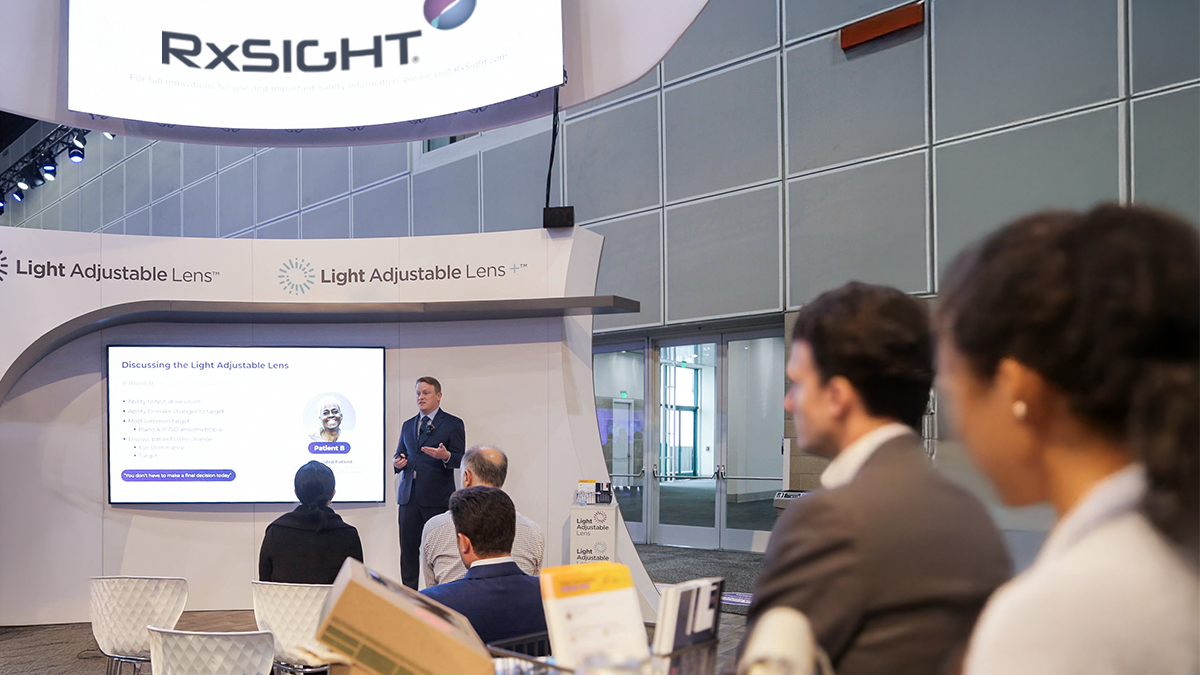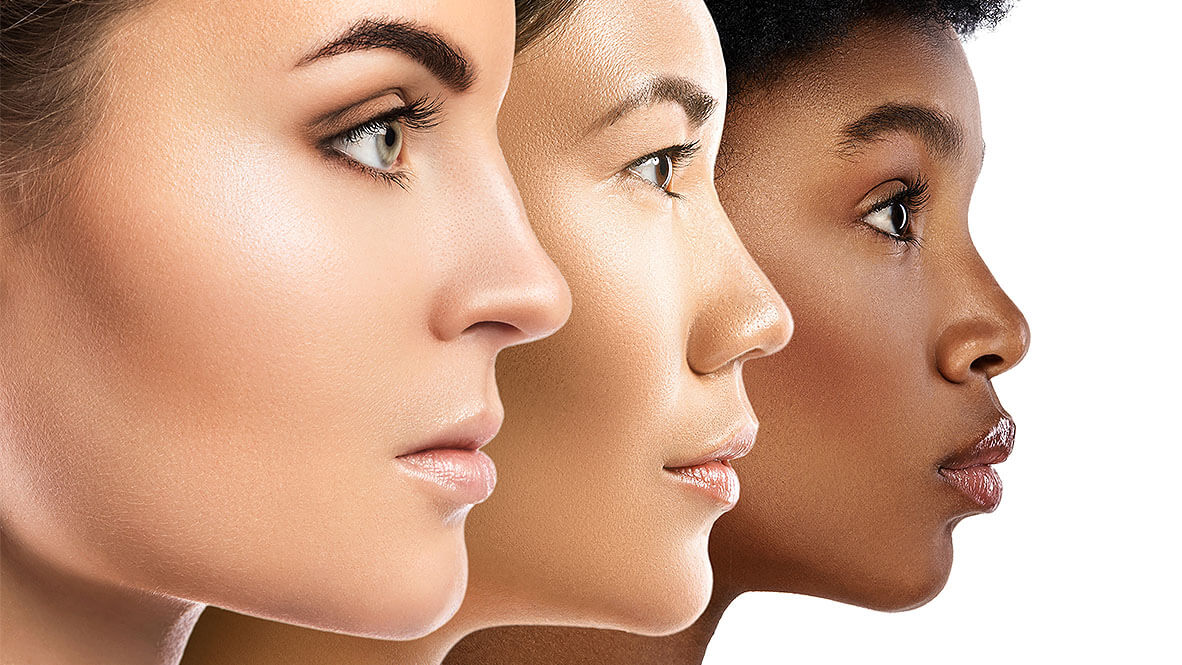Sponsored by RxSight
From rooftop riffs to precision shifts: RxSight amps up ASCRS 2025 with LAL magic.
The American Society of Cataract and Refractive Surgery Annual Meeting (ASCRS 2025) started with a bang—and a beat—as RxSight (Aliso Viejo, CA, United States) set the tone with LALapalooza, an eventful celebration that took place 34 stories high at La Lo La Rooftop. Against a stunning backdrop of 270-degree city views, some of ophthalmology’s brightest minds gathered for a sundowner session of food, fun and a little rock and roll (with a guest appearance by Dr. Vance Thompson on drums).
But the real headliner wasn’t the party. It was the technology everyone was there to celebrate: RxSight’s Light Adjustable Lens™ (LAL®/LAL+®). With a perfect blend of entertainment and education, RxSight showed how the future of cataract surgery isn’t just bright—it’s adjustable.
“We all know that cataract surgery is not as accurate as we’d love it to be,” Dr. Thompson told the crowd. “But with this lens, I can just change it to the power for you. It’s the only lens on Mother Earth that I can customize to your eyes, and patients absolutely love that.”
WATCH NOW: RxSight’s Adjustability Tour During the ASCRS 2025 Annual Meeting
The power of adjustability
The following day at RxSight’s ASCRS booth, the buzz continued with real-world success stories, eye-popping outcomes and insider strategies that are transforming practices across the country.
Dr. John Vukich and Dr. Nick Bruns from Summit Eye Care of Wisconsin shared impressive statistics from their practice, where they’ve performed over 1,000 LAL procedures. “It has become the centerpiece of our practice,” Dr. Vukich explained. “It has become what drives patient satisfaction and also drives patient volume.”
Their data revealed remarkable outcomes, with 94.8% of LAL patients and 96.7% of LAL+ patients achieving vision within a half diopter of their target. Perhaps most impressive was their conversion rate: “When we started our practice, the premium conversion rate was 7% in the Milwaukee market. We were a trailing indicator in the United States, and we are now over almost 50%,” Dr. Vukich noted.
Making adjustability possible
At the heart of the LAL system is the Light Delivery Device (LDD), which RxSight representatives are demonstrating at their booth throughout the conference in Los Angeles.
The LDD non-invasively delivers ultraviolet light to the Light Adjustable Lens to adjust vision to the desired target. Patients typically begin treatments three to four weeks after cataract surgery, once they are refractively stable. Each treatment takes approximately 90 seconds, with patients requiring between three to five total light treatments separated by at least three days each.
Customized communication
Dr. Thomas Meirick from Wolfe Eye Clinic in Iowa focused on how to customize patient communication throughout the LAL journey. “When we look globally about who this technology is best for, I think it’s pretty simple. It’s anybody seeking their best uncorrected visual acuity,” he noted. “And that can be slightly different for each patient as we’ll talk about.”
He went on to explain, “When I think about the discussions I have with patients, they broadly fit into three categories.” These include: the detail-oriented ones who know exactly what they want, the overwhelmed patients who can’t decide and complex cases with prior surgeries or eye conditions.
“With these types of patients who have these really specific goals, LAL offers us a great opportunity,” Dr. Meirick explained. “We can adjust for any changes or variations of their biometry, their effective lens position and really be precise with hitting that target they’re looking for.”
He also emphasized the importance of managing expectations: “If I tell patients we’re going to be able to give you options and we’re going to be able to meet what you decide is your best vision, I know I can meet that 100% of the time.”
The mix-and-match advantage
Dr. Eva Kim from ICON Eyecare in Colorado shared her strategy of mixing and matching LAL in the dominant eye and LAL+ in the non-dominant eye. “I would say my most typical pattern is to utilize LAL for the dominant distance eye to really hone in on that ridiculously sharp vision that people want in the distance, and then utilize the [broadened depth of focus] of a LAL+ in their non-dominant eye,” she explained.
Her approach has yielded impressive results: 92% of her patients achieve 20/20 binocular uncorrected distance visual acuity (UDVA), with about 70% hitting J1 near vision. The key advantage is reduced anisometropia between eyes, typically landing at only -0.5 to -0.75 diopters in the non-dominant eye— compared to -1.16 with traditional LAL blended vision.
“What turns out is that you’re maybe focusing or aiming for about a -0.5, -0.75, and getting great near vision such as J1, J1+. So it’s been really, really successful,” Dr. Kim noted.
The ultimate differentiator
Dr. Joseph Ling and CEO Shareef Mahdavi from Laser Eye Center of Silicon Valley in California emphasized how the LAL creates a memorable patient experience.
“The light adjustable lens really creates a memorable patient experience in our practice because the patients really feel invested and involved in the process,” Dr. Ling explained. “No longer is it a one-sided relationship where the surgeon tells the patient, ‘Well, this is what you’re going to get, this is the results you’re going to have to accept, and that is that.'”
Mr. Mahdavi added, “This particular technology is special because it really does offer something that we’ve never before seen in ophthalmology. And that’s the ability to have patient experience built into the product itself.”
READ MORE: 12 Notable Ophthalmic Innovations, Methods or Needs in Ophthalmology
Their practice has seen remarkable growth since adopting the technology. “At the Laser Eye Center of Silicon Valley, about 75% of our patients are software engineers or very, very particular patients,” Dr. Ling noted, explaining how the LAL’s customization appeals to their detail-focused clientele.
Real-world impact
Throughout the presentations, speakers shared compelling patient stories that illustrated the LAL’s transformative effect.
Dr. Vukich recounted how the “Voice of the Green Bay Packers” was planning to retire because he could no longer read jersey numbers from the broadcast booth. After receiving the LAL, “he signed a two-year extension on his contract instead of retiring,” Dr. Vukich recalled.
Dr. Bruns shared the story of a 29-year-old news anchor with premature cataracts and high hyperopia who needed optimized vision for her on-camera work. “After we do the adjustments, uncorrected, she was 20/20, J1. She was our biggest advocate at the practice, writing us a glowing review and telling all her friends. And we simply could not have gotten her there without LAL adjustments,” he explained.
The future isn’t fixed
As ASCRS 2025 continues, the message from RxSight is clear: in vision correction, the future isn’t fixed—it’s adjustable. The Light Adjustable Lens represents not just a technological innovation but a fundamental shift in how doctors and patients collaborate to achieve optimal vision outcomes. By putting the power of customization in the hands of both providers and patients, RxSight has created a technology that delivers not just individualized clinical results, but a satisfying and empowering clinical experience for everyone involved.
READ MORE: Follow our ASCRS 2025 coverage for live updates and the latest in ophthalmology!
Editor’s Note: Reporting for this story took place during the annual meeting of the American Society of Cataract and Refractive Surgery (ASCRS 2025) being held from 25-28 April in Los Angeles, California, United States.



